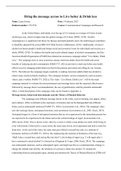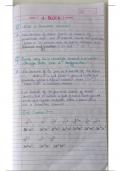Cas
Individual essay health campaign Alcohol use
- Cours
- Établissement
Essay van een Amerikaanse alcohol campaigne. Omschreven is het gezondheidsprobleem, gevolgd door de gebruikte communicatie strategieën en uitleg waarom we;/niet effectief en een voorbeeld van gamification. Beoordeeld met een 8,5! Behaald tijdens mijn master Health sciences
[Montrer plus]












